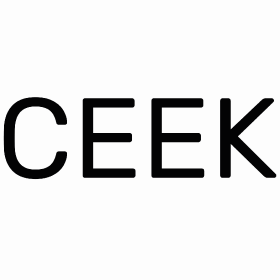
How to Create the Best eLearning Content In 2023?
Affordable prices. No commute. Learning at comfort.
The advantages of eLearning are enough to outweigh any form of traditional education. In fact, at any place where training is required, and not just in educational institutes, eLearning has established itself as a mainstream way of learning.
So, if you are thinking about developing an eLearning course of your own, the masters have postulated some rules to make it simpler for you to create an amazing course.
Keep reading to learn more about creating better eLearning content.
How to create great courses?
Many a time, developers create online courses with the wrongful conviction in mind, like, more traffic on their website or higher conversion rate. And the reason is simple – People will only pay for and complete your course when they find it interesting and not because you marketed it well.
So, before you get on with creating a content-comprehensive blog which will only overwhelm your readers, keep the following rules in mind.
1. Be relevant
An eLearning course or rather any course shouldn’t be anything but relevant. The best way of keeping a course relevant is by adopting the ways of micro-learning.
Micro-learning refers to getting your daily dose of learning in smaller chunks of knowledge so that it is easy to grasp and even easier to retain.
When you divide your eLearning in such digestible chunks, it becomes simpler for not just the learners but for you, as a developer, to design it.
Always remember that the rule of relevancy applies to not only the written or theoretical content but also to videos, images, animations and any other form of content as well.

2. Hold back the information
When you are developing a learning course, it is tempting to add every last bit of knowledge that you have researched. However, following the rule of relevance, it is crucial to keep in mind that there are varying degrees of importance attached to every piece of information.
While some of the facts and lessons will be considered a “must-know” for your course, others can be categorized as “should know” and “could know”.
It helps the developers to first classify these bits in the three categories and then decide the depth of details necessary to be added to each category.
For instance, if you are creating a course for product knowledge training, then adding information about its sales can be a “should know and inventory can be a “could know”.
3. Make the course interactive (thus, engaging)
When it comes to training your employees, say for, Branding & Communications Training, it is likely that not everyone’s passion in life is learning about branding.
What to do then?
Then, the effectiveness of your course will depend upon your presenting skills.
- Use images and media wherever possible. Not just to reinforce the written lessons but they can also be used to replace them.
- Add questions and quizzes in between topics to keep the learners engaged and interested.
- Sprinkle trivia, statistics, and interesting research throughout the course.
- Remember to add “homework” which will help your learners to apply their daily learning in some way.
- If possible, create conversational videos to explain the written lessons.
- You can also try gamification in many innovative ways.
There are many learning management systems that will make this process easier for you.
4. Prompt discussions

People learn the best with interaction. When there is an active discussion on certain topics, learners are better able to retain that knowledge.
You can use this tactic while designing your course.
Especially when you are developing a course for distance learning students, it can prove to be vital to add a provision for student interaction since they lack it.
For achieving this, you can add a discussion portal to help your students communicate with other students and add general discussion topics in the curriculum. These topics can also be given as daily assignments.
The goal here is to create an actionable writing style which engages all the senses of the learners and help them in retaining more information through a kind of practical application.
5. Make it an experience
It is common knowledge that the things which we experience first hand, we remember more vividly and for a much longer time.
The biggest problem with eLearning courses is that even with the attractive elements like visuals and quizzes, the courses lack relatability for the learners.
A truly great eLearning course gives the user the experience of a two-way conversation which was fun and thus, memorable. An effective way of doing this is with the help of questions, examples, and stories. But the important thing to remember here is that, for picking or creating the right set of examples, you must know your audience. iSpring Suite Max can support you along the way! The fully-packed eLearning authoring solution helps turn your existing PPT slides into engaging training modules with interactive quizzes, video lectures, screencasts, role-plays and interactions within minutes.

Different cultures will face a difference in values and that will affect the way they learn as well. The right kind of content can only be created when you are aware of the demographics of your target audience.
The next stage of eLearning course development
As much as creating interesting content is crucial for your eLearning course, it is also important is making it visible for your target audience.
The only way to achieve this through digital marketing tactics. Some of the most effective ways to establish your identity in the eLearning marketing can be as following,
- Webinars: Hosting a webinar can make your eLearning course a conversion magnet. It is a platform where you can share all the important highlights of your course and really convey its details as you like without leaving room for perceived notions. It also gives you an upper hand in the area of customer relationships.
- Email Marketing: Personalized emails are still rage in today’s highly developed digital marketing universe. Your emails can offer eBooks, bonus research studies, case studies and even introductory videos. Any of these elements along with the right CTA can guarantee the success of your eLearning course.
- Promotional Video: Videos are among the most beneficial ways of promoting your content. In the case of eLearning courses as well, making an engaging introductory video or an interactive explanatory video and then marketing it, there are higher chances of attracting leads.
Lastly, when used together, these tactics can build-up a strong eLearning course that will never fizz out. With the online course completion rates dropping so rapidly, there is an urgent need for a course that will attract and keep the students engaged throughout.






















